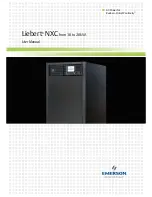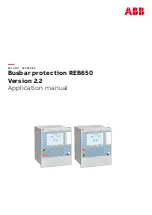
March 2011
RP Series
48
12.4.5. Message Unit Separator
When two or more message units are combined into a compound message, separate the
units with a semicolon (VOLT 100;FREQ 60).
12.4.6. Root Specifier
When it precedes the first header of a message unit, the colon becomes the root specifier. It
tells the command parser that this is the root or the top node of the command tree. Note the
difference between root specifiers and header separators in the following examples:
SOURce:VOLTage:LEVel 100
All colons are header separators
:SOURce:VOLTage:LEVel 100
Only the first colon is a root specifier
SOURce:VOLTage:LEVel 100;:FREQuency 55
Only the third colon is a root specifier
You do not have to precede root-level commands with a colon; there is an implied colon in
front of every root-level command.
12.4.7. Message Terminator
A terminator informs SCPI that it has reached the end of a message. The only permitted
message terminator is:
newline (<NL>), which is ASCII decimal 10 or hex 0A.
In the examples of this manual, there is an assumed message terminator at the end of each
message. If the terminator needs to be shown, it is indicated as <NL> regardless of the
actual terminator character.
12.5. SCPI Data Formats
All data programmed to or returned from the AC source is in ASCII. The data type may be
numerical or character string.
12.5.1. Numerical Data Formats
Symbol
Data Form
Talking Formats
<NR1>
Digits with an implied decimal point assumed at the right of the least-
significant digit. Examples: 273
<NR2>
Digits with an explicit decimal point. Example:.0273
<NR3>
Digits with an explicit decimal point and an exponent. Example: 2.73E+2
<Bool>
Boolean Data. Example: 0 | 1
Listening Formats
<Nrf>
Extended format that includes <NR1>, <NR2> and <NR3>. Examples: 273.2
, 2.73E2
<Bool>
Boolean Data. Example: 0 | 1
12.5.2. Character Data
Character strings returned by query statements may take either of the following forms,
depending on the length of the returned string:
















































